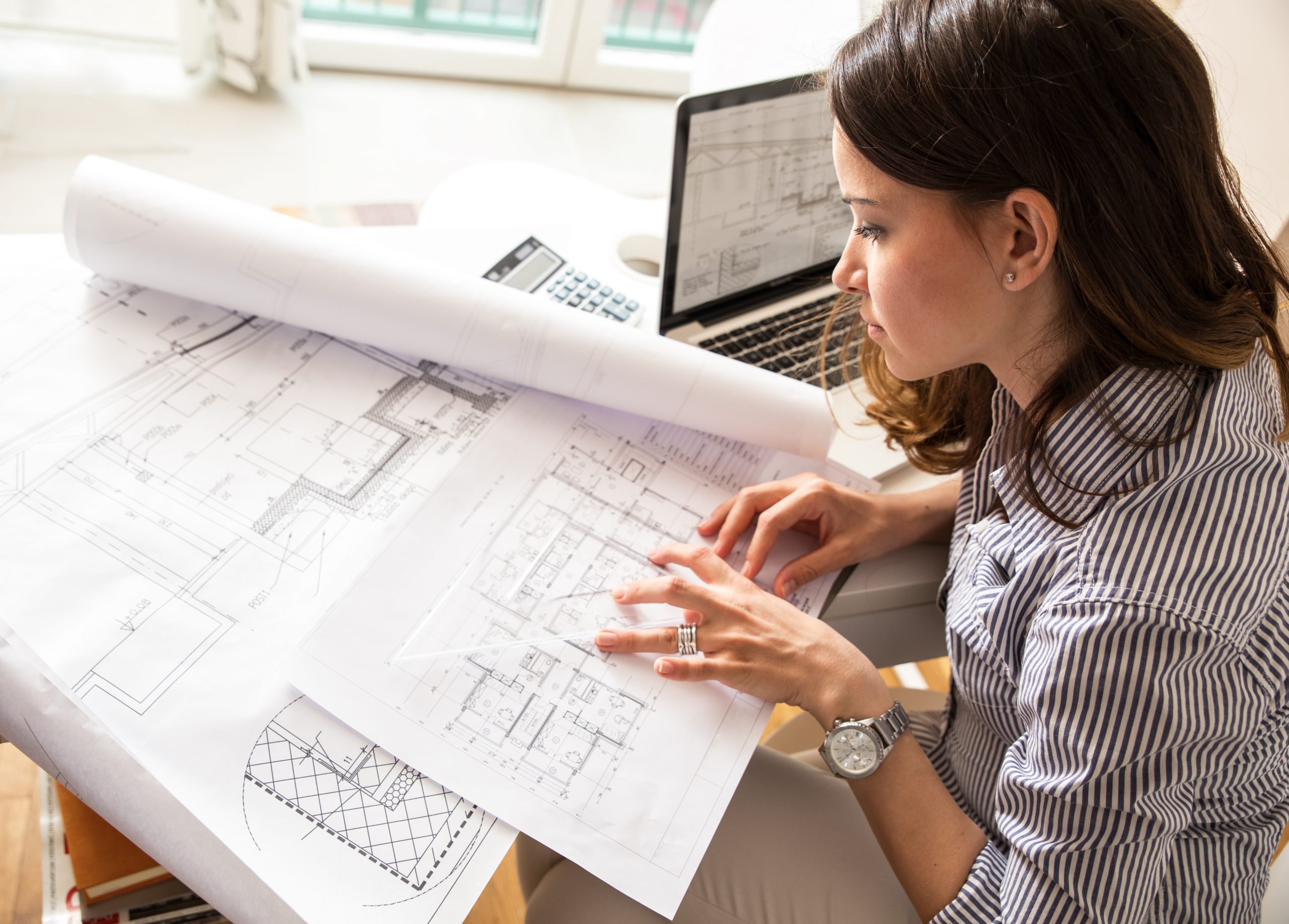Architect Collaboration Tips for Working with Consultants and Project Managers
Architect Collaboration Tips for Working with Consultants and Project Managers
Blog Article
Recognizing the Diverse Occupation Paths Available for Aspiring Architect
As an aspiring Architect, you have a globe of occupation courses waiting for you. Whether you're drawn to conventional architecture or the subtleties of sustainable design, there's a niche that straightens with your rate of interests.
Conventional Architecture: Creating Frameworks and buildings
Typical style concentrates on creating buildings and structures that mix functionality with aesthetic allure. Your designs can show social heritage, showcasing local customs while fulfilling modern requirements.
You'll establish abilities in drafting, model-making, and site evaluation, allowing you to picture and connect your ideas properly. Involving with clients, you'll need to comprehend their vision and convert it into practical layouts.
Furthermore, constructing codes and sustainability techniques are necessary in your work, ensuring your structures are eco friendly and safe. As you grow in your profession, you'll discover chances in household, business, and even restoration projects, each offering distinct challenges. Embracing conventional style leads the way for a satisfying occupation that pays homage to the past while shaping the future.
Urban Planning: Forming Neighborhoods and Public Spaces
As an ambitious Architect, you can play an essential role as an urban planner, transforming how communities operate and interact. By utilizing neighborhood engagement strategies, you'll assure that homeowners have a voice fit their atmosphere. Plus, incorporating sustainable design concepts will certainly assist create rooms that not only meet today's demands however likewise protect the future.
Role of Urban Planners
While lots of could assume of architects as the sole enthusiasts behind structures, city planners play a crucial role in shaping the wider landscape of areas and public spaces. By working together with different stakeholders, you'll aid design parks, transportation systems, and household areas that advertise social interaction and availability. Your know-how in spatial design and neighborhood characteristics allows you to picture future growth while protecting social heritage.
Community Interaction Approaches
Reliable neighborhood interaction techniques are crucial for metropolitan organizers to guarantee that the voices of citizens are listened to and valued in the planning process. To promote purposeful discussion, you ought to prioritize open online forums and workshops where community members can reveal their concepts and problems. By proactively listening and integrating comments, you'll produce areas that mirror the area's demands, ultimately leading to more sustainable and effective urban atmospheres.
Sustainable Style Principles
When making metropolitan spaces, including lasting style principles is essential for creating settings that prosper both ecologically and socially. Consider incorporating eco-friendly spaces, like yards and parks, to enhance biodiversity and boost air high quality.
Designing with water preservation in mind is likewise key-- think of rainfall gardens and permeable surface areas to handle stormwater. Including community participants throughout the planning process guarantees that the spaces you create satisfy their requirements and motivate social communication. By welcoming these concepts, you'll add to dynamic, lasting metropolitan landscapes that benefit every person.

Landscape Design: Developing Sustainable Exterior Environments
As you check out landscape style, you'll find essential style concepts that create lovely and functional outdoor areas. Lasting techniques play an important function in ensuring these environments prosper while minimizing environmental effect. Plus, you'll locate a range of occupation opportunities that enable you to make an actual difference in how people communicate with nature.
Style Concepts in Landscape
Recognizing style concepts in landscape architecture is important for creating sustainable outside environments that balance with nature. You'll need to consider components like scale, percentage, and balance to ensure your layouts feel natural and welcoming. Additionally, pay interest to seasonal adjustments, developing with products that complement the surroundings year-round.
Lasting Practices Summary
Lasting practices in landscape style not only concentrate on visual appeals but additionally prioritize environmental health and source conservation. By integrating indigenous plants, you boost biodiversity and decrease the demand for chemical fertilizers and chemicals. Carrying out efficient irrigation systems aids conserve water and decreases overflow, safeguarding neighboring ecosystems. You can make spaces that advertise soil health, such as practicing and using natural products permaculture concepts. Furthermore, integrating environment-friendly infrastructure, like rainfall yards and porous pavements, aids in stormwater management and reduces city warmth. When you develop exterior atmospheres with sustainability in mind, you contribute to a healthier planet and give rooms that promote neighborhood connection. Ultimately, these practices guarantee your layouts profit both people and the atmosphere for many years to find.
Occupation Opportunities Exploration
With a solid structure in lasting techniques, landscape architecture uses a selection of career courses that permit you to make a purposeful influence on the setting. Urban coordinators usually team up with landscape designers to create eco-friendly areas in metropolitan setups, enhancing city livability. If you're enthusiastic concerning education and learning, think about ending up being a landscape architecture educator, motivating future generations.
Lasting Design: Concentrating On Eco-Friendly Practices
As you discover your occupation in architecture, welcoming green methods can set you apart in an affordable field. Lasting style focuses on developing buildings that minimize ecological impact while boosting passenger well-being. By including sustainable products, energy-efficient systems, and sustainable building methods, you'll add to a greener future.
Beginning by acquiring expertise of eco-friendly accreditations like LEED or BREEAM, which can strengthen your credentials. Consider exactly how natural light, air flow, and thermal effectiveness can optimize layout. Work together with engineers and environmental consultants to introduce options that reduce waste and save sources.
Don't neglect the significance of area involvement-- appealing neighborhood stakeholders can influence styles that integrate with the environment. As customers significantly focus on sustainability, your experience in environmentally friendly methods will certainly not only attract jobs however additionally satisfy your interest for responsible design. Welcome this essential element of the visit the site occupation, and see your career thrive.
Historic Preservation: Securing and Recovering Social Heritage
While you begin on your building trip, consider the crucial role of historic preservation in maintaining our social heritage. This area concentrates on the protection and restoration of significant buildings, sites, and frameworks that inform the tales of our past. By participating in historic preservation, you'll help safeguard the architectural heritage that forms neighborhood identity.
As a historic conservation Architect, you'll assess historical value and examine the condition of frameworks. You'll work very closely with guardians and chroniclers to ensure genuine repair techniques are used. This profession course enables you to blend imagination with research, allowing you to make solutions that value initial materials and workmanship.
Your job not only adds to sustainability by recycling existing buildings however additionally cultivates a sense of pride within areas. Accepting this course will certainly aid you become a guardian of history, protecting the tales and looks that enrich our lives.
Interior Design: Enhancing Indoor Spaces
Historical conservation and indoor architecture both share a commitment to improving the developed environment, however they focus on various elements. While historical conservation stresses keeping a framework's historical and cultural value, interior architecture zeroes in on optimizing indoor spaces for performance and appearances.
As an aspiring Architect, you'll find that indoor style permits you to mix creativity with technological abilities. You'll make rooms that not just look great however likewise promote comfort and efficiency. This field involves understanding just how light, shade, and products connect within a room, influencing state of mind and use.
You'll function on numerous jobs, from property homes to industrial workplaces, making sure that each atmosphere satisfies the demands of its owners. By focusing on customer experience, you can change insides right into inspiring and practical spaces, making a substantial effect on just how people engage with their environments. Embrace the opportunity to improve indoor settings and shape the way individuals work and live.
Industrial Style: Merging Capability With Aesthetics
Industrial layout plays an important function in creating items that perfectly mix looks with performance, ensuring that what you utilize day-to-day is not only aesthetically attractive yet also sensible. As an aspiring Architect, you could engage yourself in this area, concentrating on developing every little thing from furniture to customer electronic devices. Your job includes understanding customer requirements, products, and producing procedures, allowing you to develop innovative anonymous remedies that improve everyday experiences.
In commercial style, you'll frequently collaborate with designers, makers, and marketing experts, guaranteeing that your layouts are not just lovely but additionally possible. This job path supplies a dynamic setting where imagination fulfills practicality, making it a fulfilling option for engineers interested in shaping the items of tomorrow.
Frequently Asked Concerns
What Educational Qualifications Do I Required to Become a Designer?
To become a designer, you'll require a professional level in architecture, normally a Bachelor's or Master's. Additionally, you'll need to finish a teaching fellowship and pass the Architect Registration Exam to practice legitimately.
Are There Qualification Needs for Different Building Career Paths?
Yes, there're accreditation requirements for different architectural courses. Architect. You'll require to pass examinations, full internships, and in some cases pursue specialized training, depending upon your picked emphasis, like landscape style, metropolitan design, or historical conservation
What Software Application Abilities Are Crucial for Engineers Today?

Exactly How Can I Gain Practical Experience While Studying Style?
You can obtain useful experience by interning at building companies, getting involved in layout competitors, volunteering for community tasks, or working together with classmates on real-world projects. These opportunities boost your abilities and build beneficial connections in the industry.
What Work Opportunities Exist Outside Typical Design Firms?
You can explore different job possibilities outside conventional style firms, like city planning, indoor design, landscape style, building management, genuine estate development, or perhaps duties in sustainability consulting. Each offers one-of-a-kind difficulties and incentives.
Whether you're drawn to typical style or the nuances of sustainable design, there's a specific niche that aligns with your passions.When creating urban rooms, incorporating lasting layout principles is vital for creating environments that prosper both environmentally and socially.As you explore landscape architecture, you'll find crucial design principles that produce practical and lovely exterior areas.Recognizing layout concepts in landscape architecture is vital for producing lasting exterior settings that integrate with nature.In resource commercial layout, you'll frequently collaborate with engineers, marketing experts, and suppliers, making sure that your styles are not only stunning however also feasible.
Report this page